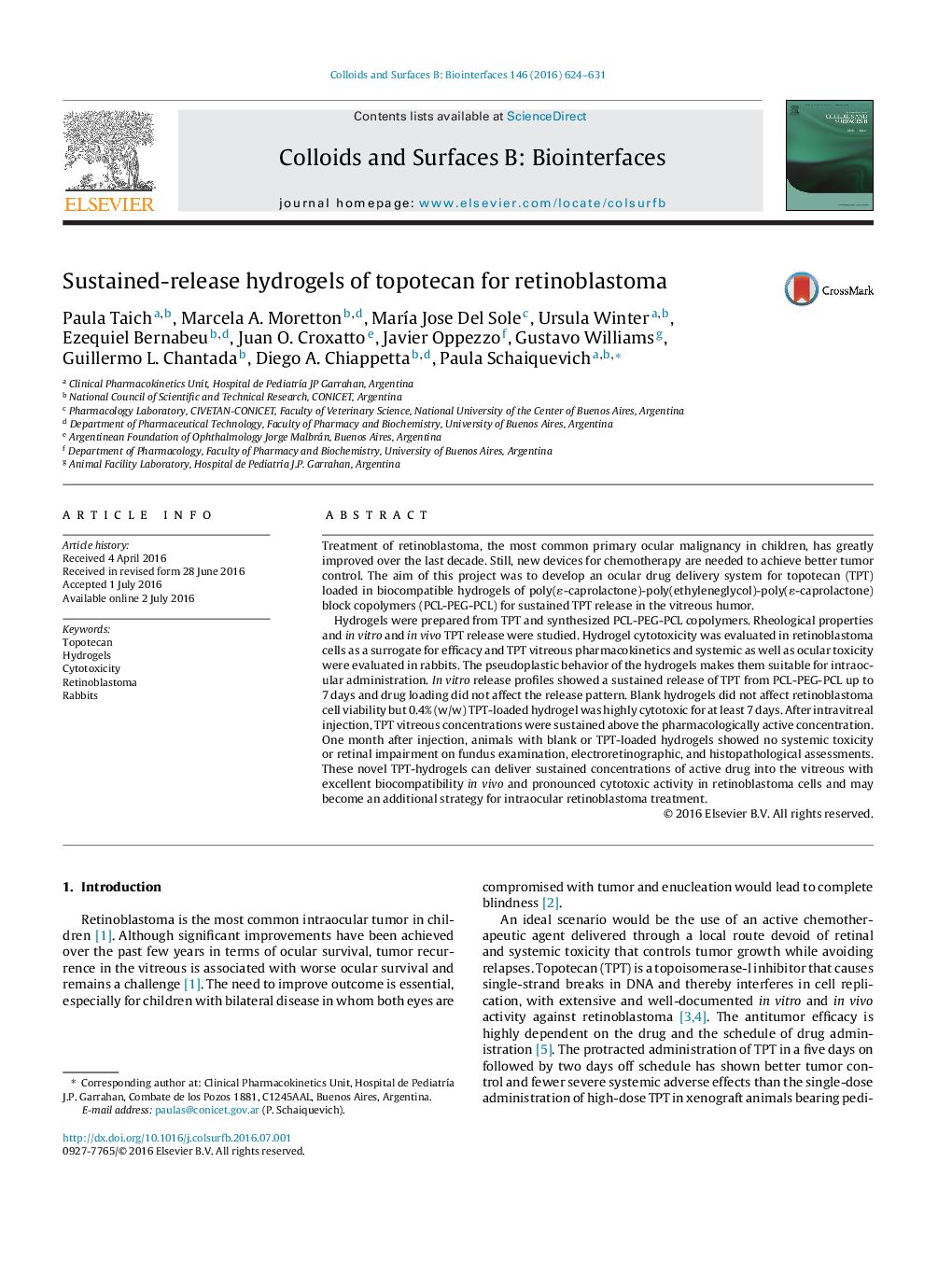| Article ID | Journal | Published Year | Pages | File Type |
|---|---|---|---|---|
| 598791 | Colloids and Surfaces B: Biointerfaces | 2016 | 8 Pages |
•Topotecan was loaded into PCL-PEG-PCL hydrogels for sustained ocular delivery.•Hydrogels exhibited a sustained release of topotecan in the vitreous humor of rabbits.•Topotecan-hydrogel exhibited prolonged cyototoxicity in retinoblastoma cell lines.•Blank- and Topotecan-hydrogels were devoid of retinal and systemic toxicity in rabbits.•The developed hydrogels may contribute to retinoblastoma treatment.
Treatment of retinoblastoma, the most common primary ocular malignancy in children, has greatly improved over the last decade. Still, new devices for chemotherapy are needed to achieve better tumor control. The aim of this project was to develop an ocular drug delivery system for topotecan (TPT) loaded in biocompatible hydrogels of poly(ε-caprolactone)-poly(ethyleneglycol)-poly(ε-caprolactone) block copolymers (PCL-PEG-PCL) for sustained TPT release in the vitreous humor.Hydrogels were prepared from TPT and synthesized PCL-PEG-PCL copolymers. Rheological properties and in vitro and in vivo TPT release were studied. Hydrogel cytotoxicity was evaluated in retinoblastoma cells as a surrogate for efficacy and TPT vitreous pharmacokinetics and systemic as well as ocular toxicity were evaluated in rabbits. The pseudoplastic behavior of the hydrogels makes them suitable for intraocular administration. In vitro release profiles showed a sustained release of TPT from PCL-PEG-PCL up to 7 days and drug loading did not affect the release pattern. Blank hydrogels did not affect retinoblastoma cell viability but 0.4% (w/w) TPT-loaded hydrogel was highly cytotoxic for at least 7 days. After intravitreal injection, TPT vitreous concentrations were sustained above the pharmacologically active concentration. One month after injection, animals with blank or TPT-loaded hydrogels showed no systemic toxicity or retinal impairment on fundus examination, electroretinographic, and histopathological assessments. These novel TPT-hydrogels can deliver sustained concentrations of active drug into the vitreous with excellent biocompatibility in vivo and pronounced cytotoxic activity in retinoblastoma cells and may become an additional strategy for intraocular retinoblastoma treatment.
Graphical abstractIn vitro and in vivo ocular release of topotecan from the hydrogels. Abbreviations: TPT, topotecan; PCL-PEG-PCL, ε-caprolactone and poly(ethylene glycol) 4000 copolymer.Figure optionsDownload full-size imageDownload as PowerPoint slide
